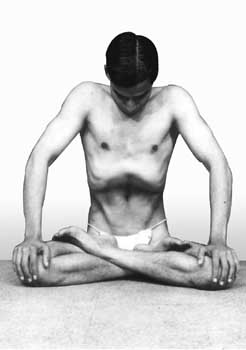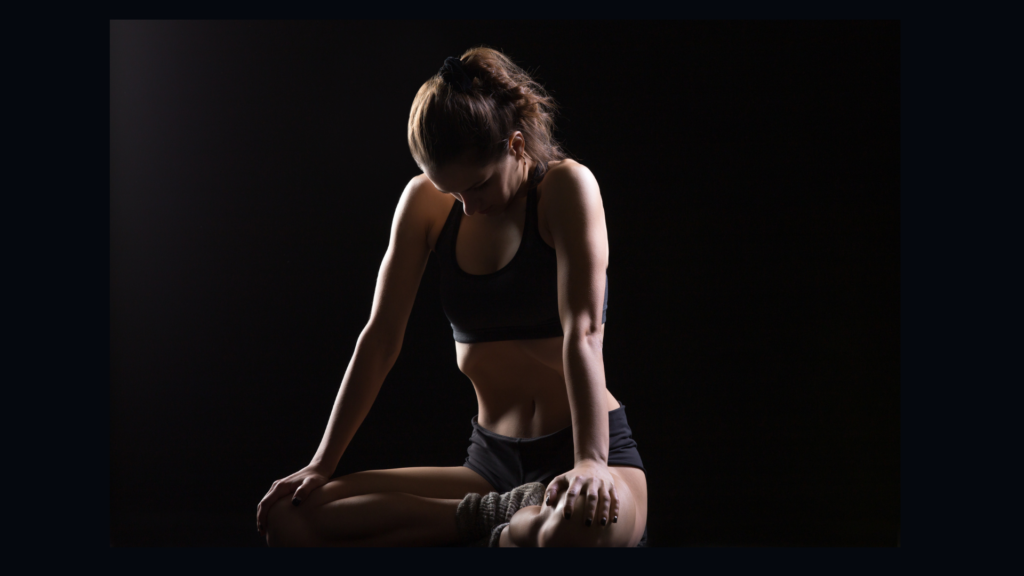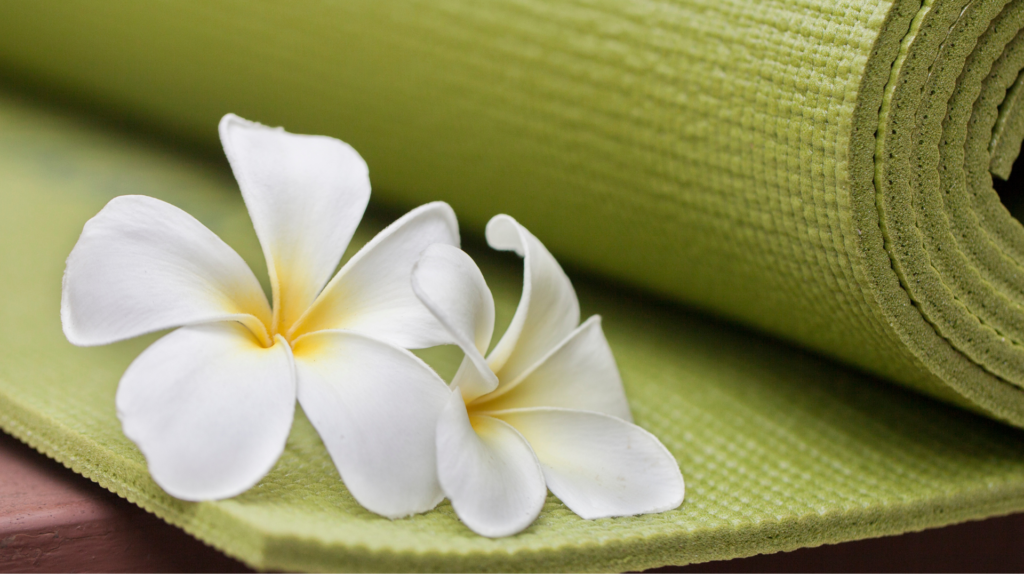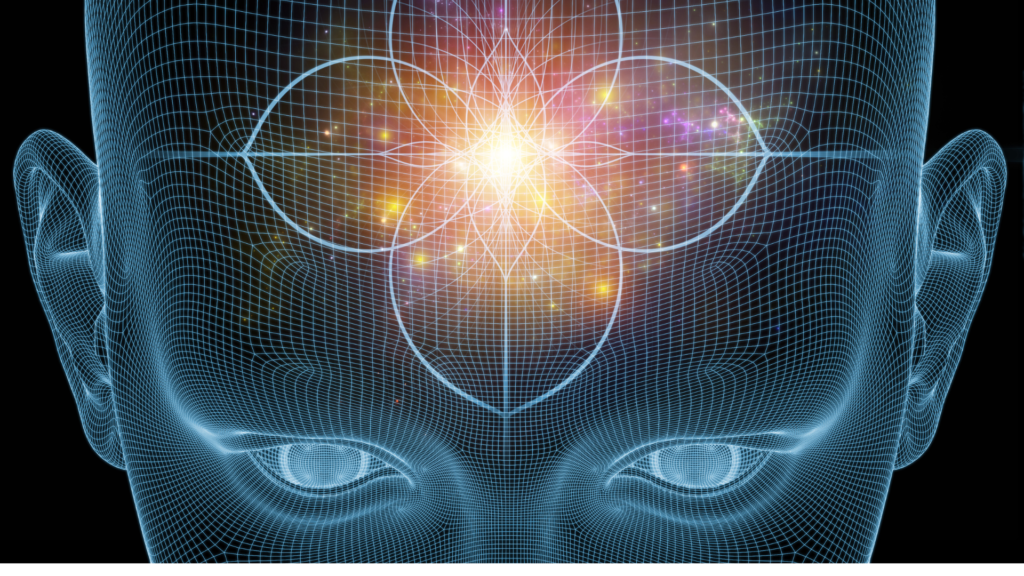Hatha Yoga Pradeepika Chapter 3b– Light on Hatha Yoga (Chapter 3, 61 to 130 shlokas)
Hatha Yoga Pradeepika Chapter 3b – Mudra (61 to 69 shlokas)

61. The Moola bandha – Press the heel into the lower genitals (the perineum), contract the anus and draw the apana vayu upwards. This is moola bandha.
62. By contracting the anus repeatedly, yogis force the apana to move upwards.
63. Also, by pressing the heel into the anus compress the vayu forcibly, repeat until the apana vayu travels upward.
64. Moola-bandha results in uniting of prana, apana, naada and bindu and gives success in yoga, without doubt.
65. By constant practice of moola-bandha, there is a reduction in production of urine and faeces. Consequently, even an old man becomes young due to this practice.
66. When the apana rises upwards and reaches the zone of fire, the flame of the fire gets lengthened, being fanned by apana.
67. When this gastric fire and apana conjoin the naturally hot prana, it greatly increase the heat in the body.
68. As a result, the Kundalini, which is in a supine state, feeling the heat, is awakened and like a serpent struck by a stick, straightens itself.
69. It then enters the brahma nadi like a snake enters its hole. So, the yogi should practice moola-bandha always.
Hatha Yoga Pradeepika Chapter 3b – Mudra (61 to 76 shlokas)
70. Jaalandhara bandha: Contract the throat and hold the chin firmly against the chest. This bandha is called Jalandhara bandha which destroys old age and death.
71. It constricts the network (jaala) of nadis through which the juice (jaalam) flows towards the nabhi, it is called jaalandhara bandha, it destroys afflictions of the throat.
72. The indication of the throat bandha being correct, the nectar does not fall into the fire of the stomach (jaataragni) and prana is not agitated.
73. The contraction of the throat firmly stops the 2 nadis (ida and pingala). This is the middle chakra (Madhya) and controls 16 aadharas (vital points – toes, ankles, knees, thighs, anus, genitals, navel, heart, neck, throat, tongue, nose, center of the eyebrows, forehead, head and brahmarandra).
74. By drawing up the moola bandha, perform uddiyana bandha. Next, hold the ida and pingala (in jaalandhara bandha) and allow the flow (of prana) in the westerly direction.
75. By this, the prana becomes motionless, there is no death old age or disease.
76. These 3 bandhas are the best as practiced by the great siddhas. In fact, of all Hatha yoga and Tantric practices, these are the chief ones.
Hatha Yoga Pradeepika Chapter 3b – Mudra (77 to 82 shlokas)
77. Vipareetakarani: That nectar of the moon which has divine qualities gets digested by the Sun and induces ageing.
78. There is a divine technique by which the Sun’s face can be cheated. Only, this should be learned under a Guru and not through theoretical study or discussions.
79. When the navel is above and palate below, the Sun above and moon below, then this is Vipareetakarani. Remember, this should be learned through instructions of a Guru.
80. In the case of one who practices this daily, the gastic fires (jataragni) are increased, so one should eat sufficient food.
81. If one eats non-nutritious food, then the heat will quickly consume the practitioner. On the first day, stand on the head with feet up, for only a brief moment.
82. Increase the duration gradually every day. First, after 6 months, the wrinkles and grey hair disappear. Then, he who practices it daily for a yama (3 hours) daily, conquers death.
Hatha Yoga Pradeepika Chapter 3b – Mudra (83 to 91 shlokas)
83. Vajroli: Even for one who lives a wayward life, not following the discipline of yoga, he that performs vajroli becomes a repository of perfection (siddha).
84. 2 things are essential for this, difficult to get for ordinary people, milk and a willing woman.
85. Practice slowly, the drawing up the seminal discharge (bindu) emitted during intercourse. Whether a man or woman, one achieves success in the practice of vajroli.
86. Using a pipe, blow slowly through the tube into the hole of the penis to allow passage of air.
87. The semen (bindu) which is just discharged into the organ of the woman can be drawn back and preserved.
88. The yogi, who preserves his semen (bindu), conquers death. When semen is lost, death ensues, but preservation prolongs it.
89. When semen is preserved, the body emanates a pleasant smell. There is no fear of death for as long as the semen is preserved in the body.
90. The control semen is subject to discipline of thought. Life depends on semen. Therefore, thought process and semen should be carefully protected.
91. The person who has perfected this practice, should, preserve his own semen and that of the woman with whom he has had intercourse.
Hatha Yoga Pradeepika Chapter 3b – Mudra (92 to 103 shlokas)
92. Sahajoli: Sahajoli and Amaroli are only variants of vajroli. Burnt cowdung ash should be mixed with water.
93. Having performed intercourse in Vajroli, the man and woman, being in a happy frame of mind should apply the mixture on the important parts of their body.
94. This is called Sahajoli and is used by yogis to give shraddha (dedication), this gives good results and bestows liberation, even though connected with sensual enjoyment.
95. This can be achieved only by yogis who are virtuous, perceive the truth and are free from jealousy. However, not in the case of selfish people.
96. Amaroli: The first part of the stream has bile, should be discarded, the last part has no essence, should also be discarded. Whereas, the middle stream when absorbed is called Amaroli by the kapalikas.
97. He who drinks amari (middle part of urine), inhales it everyday and practices vajroli is practicing amaroli.
98. He should mix ashes with the nectar flowing from the moon and smear it on the principal limbs. Then divine sight is obtained.
99. If a woman is able to draw up the semen of a man after sufficient practice and preserve her own through vajroli, she become a yogini.
100. Without doubt, even the least of her seminal fluids is not lost and in her body, the naada becomes the bindu.
101. The bindu and rajas, becoming united and remaining in the body through practice of vajroli confer all siddhis.
102. She that preserves by upward contractions, her rajas, is a yogini. She can see the past and future and attains perfection in kechari.
103. Perfection is achieved by the practice of vajroli, it gives merit, even though through sensual means, it leads to emancipation.
Hatha Yoga Pradeepika Chapter 3b – Mudra (104 to 119 shlokas)
104. Saktichalana: kutilangi, kundalini, bhujangi, sakti, ishwari, kundali, arundhati, all are synonymous.
105. Just as one opens a door with a key, the yogi should open the door to liberation by using the kundalini
106. That road which ends in the seat of Brahma, where there is no pain, at the opening of the mouth sleeps parameshwari.
107. Above the centre of the kanda (place between the navel and scrotum) sleeps Kundalini shakti, who gives liberation to yogis and bondage to the ignorant. To know Kundalini is to know yoga.
108. The Kundalini sleeps coiled like a serpent, it is said, he that causes that shakti to move becomes free, without doubt.
109. Between Ganga and Yamuna, sits the young tapaswini (ascetic), she should be seized by force to get to the supreme position.
110. Ida is Bhagawati (Ganga), Pingala is Yamuna, between Ida and Pingala sits the young tapaswini, Kundalini.
111. Awakened by her tail being held, she shakes off her sleep, shakti moves upwards by Hatha (force).
112. Having inhaled through the Pingala (right nostril), the she-serpent should be held by the paridhana method and moved for about an hour and a half, both morning and evening.
113. About 12 finger breaths above the anus and about 4 fingers in width, soft and white, (the kanda) appears as if it were a rolled cloth.
114. Sit in Vajrasana, hold the feet firmly with the hands, the kanda will then be near the ankle joint which should be pressed.
115. The yogi, seated in vajrasana and having moved Kundalini, should perform Bhastrika to arouse the Kundalini soon.
116. Bhanu (Surya – Sun) should be contracted (by performing uddiyana) which will move the Kundalini, even when the person is at the mouth of death, there will be no fear of death.
117. By fearlessly moving this for 2 muhurta (2 x 48 minutes), she is drawn into the sushumna and moves up a little.
118. Then, the Kundalini vacates the entrance of the sushumna, and prana occupied the sushumna iself.
119. Therefore, this comfortably dormant Arundhati should be moved continuously. For, by doing that, the Yogi is freed from disease.
Hatha Yoga Pradeepika Chapter 3b – Mudra (120 to 130 shlokas)
120. He who directs Shakti, becomes the recipient of Siddhis. In fact, nothing more needs to be said, he conquers time (death) playfully.
121. He that delights in the life of celibacy and always conforms to controlled diet, and practices stimulating the Kundalini will achieve siddhi within 40 days.
122. Once Kundalini is set in motion, Bhastrika should be practiced vigorously. By this practice, how can he become afraid of Yama (Lord of death).
123. Other than the practice of Kundalini, what are the other methods by which the impurities in the 72000 nadis can be cleared?
124. The middle nadi (sushumna) becomes straight by stringent practice by yogis, of asana, pranayama and self-controlled mudras, thus is easily achieved.
125. By practice, those that have managed to reduce the need for sleep and steadied in Samadhi, get additional benefits of Rudrani and other beneficial mudras.
126. Raja Yoga without the earth, Raja yoga without the night, Raja Yoga without mudra, seems odd, without beauty.
127. All breathing should be practiced with awareness on it. Straying of attention is not allowed by the wise man.
128. These are the 10 mudras as described by the primordial Lord Shambu. Each of them confers great Siddhis to the practitioner.
129. He who teached mudras as taught be generations of Gurus, he is the true teacher and considered to be the incarnation of Iswara.
130. Thus one who practices the teachings on mudra, he obtains the Siddhi of anima and control over time (death).



Very useful
Thank you for your support